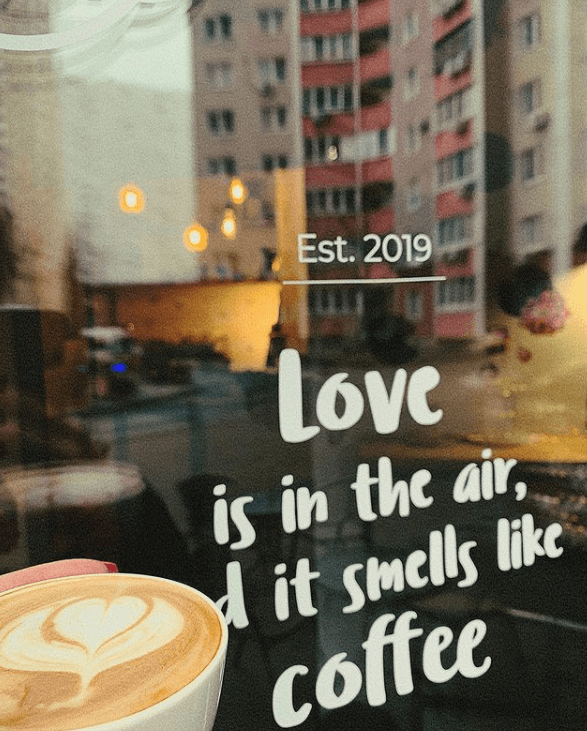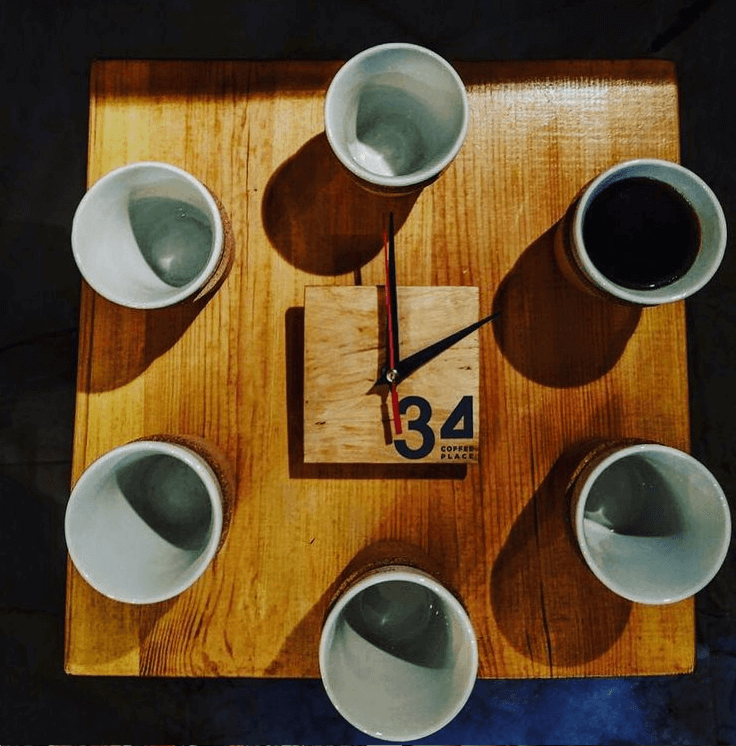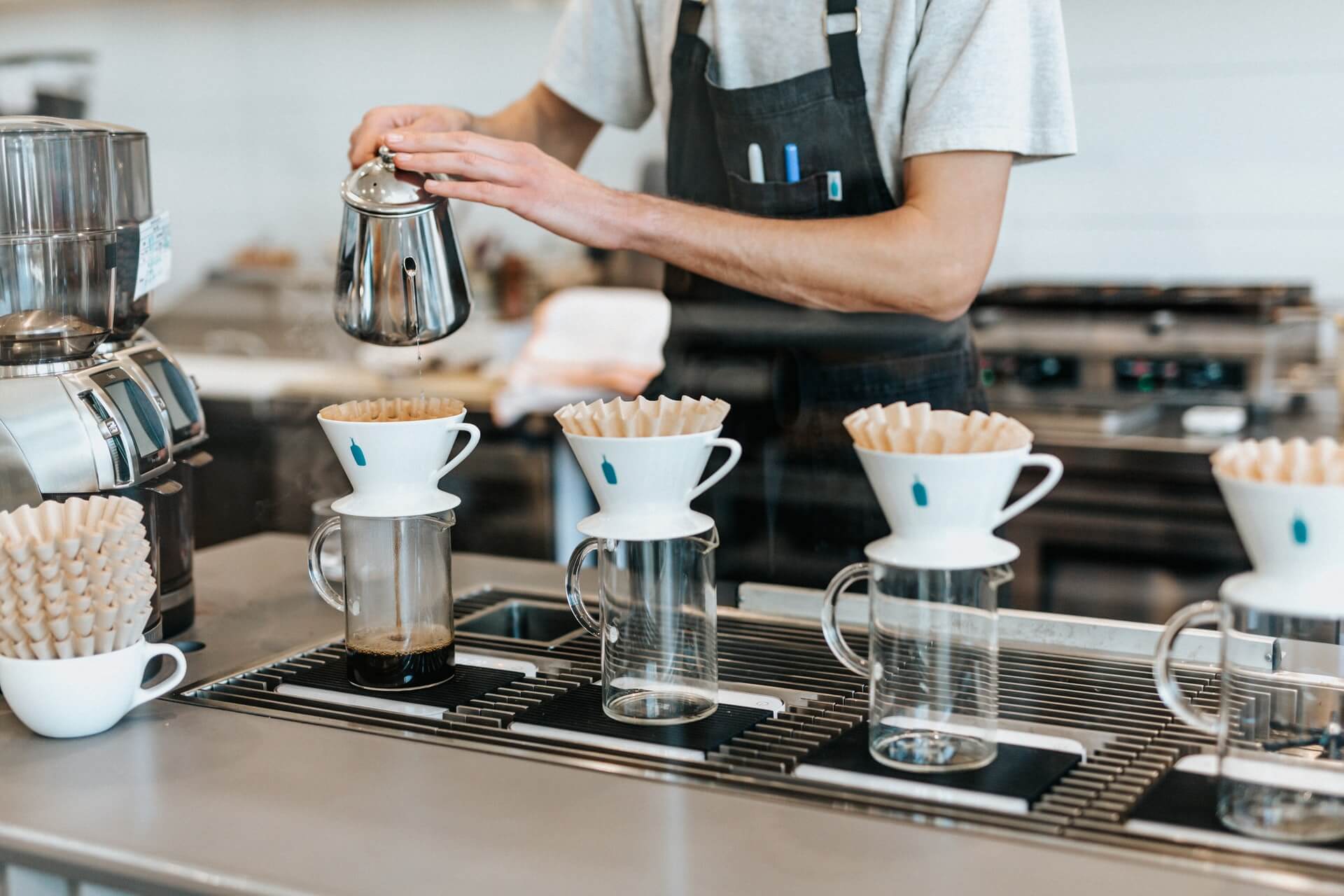This post was written by Olga Provotar, co-founder of HUSPI and owner of two small coffee shops in Kyiv, Ukraine. During the quarantine and initial lockdowns, many cafes and restaurants suffered a lot from the inability to serve their customers. Here’s a story of how everything worked out for 34 Coffee.



If your business is in the HoReCa industry, most likely you do not have customers right now, the staff is idle, and utility bills are piling up. You’re lucky if the landlords made any concessions or the premises belong to you, but most of us are not so fortunate. I am the owner of a small coffee shop in a residential area of a big city and we are the latter.
We are trying hard to save our team so we’ve kept paying them a part of the salary, but all this together means that with zero income, our monthly expenses aren’t that much lower than usual. However, I am a supporter of the idea that if all of us (employers) will try to continue to pay our employees wages, then the consequences of the crisis will be minimal, and in the 4th quarter of this year, we will see a rapid economic leap.
Coincidentally, I am also a co-owner of a software company so naturally, the first thing that came to my mind was to combine these two directions so that the losses would be at least slightly lower.
It would seem quite obvious that the whole world is getting digitized and the connection of any business industry with IT is rather a matter of time. But we see right now, after a sharp restriction on the physical flow of people due to the COVID-19 quarantine, most offline businesses found themselves practically overboard and not ready to swim. Apparently, not all obvious things are so obvious.
If we analyze the Chinese market (which was the market that entered the crisis first and, as a consequence, also recuperated the fastest as well), we see that the consumption of food and prepared food not only did not fall but, on the contrary, actually increased. The only difference is that now the order point and delivery moved almost completely online, and those restaurants that were already online before the crisis were the biggest winners.
Here’s an example: if you compare the weekly figures, the number of online queries about fresh vegetables and products in general on Baidu (the largest search network in China) for the first couple of months of the year was from 273% to 2800% of the YoY (data from Discripto, WPIC’s Big Data tool.)
Going online by any means – today it has become a prerequisite for the survival of an offline business. Therefore, I decided to act, even though in my case we are talking about a small coffee shop.
All solutions described below are applicable to all establishments that deal with food production, and most importantly are inexpensive to implement.
So what am I currently implementing? Let’s start with the tasks: the main idea of the quarantine is to limit the number of contacts with other people. How can this be done if, for example, a coffee shop is often a cramped place where people go in with friends to place an order and pay for it?
Our developers began to generate ideas, which turned out to be these solutions.
Contactless Order and Payment Processes for Takeout
We’re not talking just about paying with a card. To do this, you still need someone to take out the terminal, someone to pay, etc., which implies contacting people. What solution did we create and how does it work?
The way we set up the process, it works through the Telegram or WhatsApp bot. The customer journey is as follows:
- The entrance to the coffee house itself is closed by a large piece of plastic with a window and a shelf from the side of the street, about 4 feet high. We also drew marks every 6 feet on the pavement in front of the coffee shop, in case there’s a queue.
- At the entrance, we hung up a QR code. The client scans this code with the phone camera and automatically gets into the Telegram group (or Whatsapp, as an option), where a polite chatbot immediately provides a coffee house menu to choose from.
- The client makes his order through the bot and with his help, on the spot, can pay for the order. After that, two messages are sent:
- The client gets the message with the information that the order was successful and will be ready within a given amount of time. For example, “Thank you, your order will be ready in 5 minutes.”
- The barista gets the message with the info on what exactly was ordered and that the order was paid. It goes without saying that it’s important to keep the menu up to date so that everything the client orders and pays for is available.
- As soon as the barista receives the message, he/she begins to prepare the order and gives it to the client, putting it on the shelf in the window (naturally observing all sanitary and hygienic measures inside the coffee shop – masks, gloves, disinfection, etc.)
- The client can happily enjoy his coffee or tea by taking it off the shelf.
It takes about a day to create such a bot. Additionally, you would need a couple of days to integrate this bot with the admin panel of your internal system.
If you are unable to configure this process yourself, I’m ready to help you configure it or share our solution.
Delivery Options
If the first solution with payment through a bot is suitable for small businesses like my coffee shop, then cafes and restaurants need to take this issue more seriously.
First, you need to evaluate your resources. For example, a restaurant is, first of all, a well-equipped kitchen. It is also a team – cooks, waiters, and administrators. Finally, you have a developed list of regular customers. Dining rooms, tables, chairs, and the rest of the area for visitors are important, but it is only the front. So, what prevents you from continuing the main activity online? Relatively recently, even a term for this has appeared – “dark kitchen” – restaurants that work only for delivery.
Now there are many different options for automating the delivery process:
- You can connect your restaurant or cafe to existing food delivery options. There are several of them in Ukraine – Uber Eats, Glovo, and Raketa. (The option is quick, but you will have to share the percentage of your earnings with these companies.)
- You can go for existing software. (The option is pretty fast and long-term since you are in control. The investments would be minimal.)
- You can create your own software product. (The option is excellent but takes a while and is often expensive. In the conditions of quarantine and an unstable financial situation, I would not advise diving headlong into it, but for the future, it can be a great way out, especially if you plan to expand the network of restaurants or cafes.)
We have developed a platform that easily integrates with the internal order accounting system, but at the same time has an equipped operator’s place. The operator – perhaps one of your administrators – takes orders by phone, entering the details immediately into the system after commissioning. The work is easily done remotely, so your administrator will not even have to leave home (supporting the #stayhome idea.)
As soon as the operator enters an order in the system and the client pays for it online, it is automatically transferred to the kitchen to your cook. When ready, the cook takes the packed order to the safe zone (where there are no people), changes the status of the order to “Done” on the work device, and leaves for the kitchen again.
Now it’s the courier’s time to enter the game. The role of the courier can be easily handled by your waiters. A notification comes to a dedicated mobile app with information about the order’s readiness as well as the contact information of the client. (And yes, our development team has already developed both the admin as well as the mobile app for couriers.)
The courier picks up the package from the safe zone and delivers it to the client, keeping a distance. One option is to call the customer and leave the package with the order at the door, thus excluding direct contact.
It would take over several hundred dollars to develop a software package like this yourself, but we are ready to provide our product to you for a small monthly fee since we believe that the economies of our countries are supported by entrepreneurs like you.
Online Product Showcase
You can’t go far without a showcase. People don’t go outside as much, but they continue to eat. In any case, no matter which delivery or takeout option you choose, your customers need to be able to understand what to choose from, so you need an online menu with pictures.
Therefore, create an online storefront for your products. In this case, there are also many different options:
- A social network page – Facebook or Instagram. If you only have a menu, then you can just do Instagram. However, it is inconvenient to add links to text. Facebook, in this case, is much better as it offers specialized sections for restaurants and cafes. It even has options for making orders and payments.
- Marketplaces. No matter how strange it might have sounded before (since online marketplaces don’t usually specialize in food deliveries), now it can be a great way out. Almost all platforms offer registered users an online showcase functionality where you can post pictures of your dishes. Of course, this is not such a beautiful solution, the design might not fit the needs perfectly, but it’s a quick solution that allows you to start (or continue) to stay in business.
- CMS solutions – for example, WordPress, Tilda, or Wix. The purpose of these platforms is to create your own website quickly and they are made in such a way that almost anyone with basic tech skills can do it.
- Creating a dedicated “serious” site – there are no limits to perfection in this option. You can create a website that will be the front for your internal admin panel of orders and all processes will be streamlined as much as possible. But again, this is not a cheap option and it takes more time, so my advice to you is to focus on setting up processes and coping with the crisis, and then it will be possible to deal with this site as well.
As in the case of small coffee houses, it is very important that you can provide 100% of everything that’s available on your showcase. To minimize costs and risks, I would highly recommend concentrating on a few of your best (read – the most popular) dishes and for now, selling only them. In this case, the process of purchasing products and maintaining the leftovers will be much easier.
Important! Once your storefront is ready, you need to control the remains not only in storage but also set the “Out of stock” status on your online storefront on time. Since you also control the delivery and payment service, all you need to do is to prepare the kitchen and purchase the first, trial (and, therefore, a small) batch of products and alert your fans that you’re back.
It is best to use both email and messengers that are popular among your customers or in your country (for example, Viber, WhatsApp, Telegram, etc.) simultaneously on the same database. Yes, we will be a little annoying, but I think they will forgive you, given the current circumstances. And, you’ll have to learn the basics of SMM to support the attention.
As you might’ve guessed, we have already developed a storefront. We are ready to share this if you do not like the options above.

Conclusion
My team and I are currently working on the implementation of these products (admin panel + online payment via bot + site) for our coffee shop. I would like to say that this is a story with a good ending, but we are still only at the peak of quarantine and the economy is currently unpredictable.
Nevertheless, I try to remain an optimistic realist, and at this time of a forced “pause,” we are getting ready for the happy time when we will all be able to walk the streets of our city again and meet friends for delicious coffee. Before that, we focus on internal processes so that even during quarantine, our customers have enough caffeine to survive this time with sanity.
Wondering about time-to-value?
Request a no-obligation discovery call and receive a preliminary estimate tailored to your KPIs.


